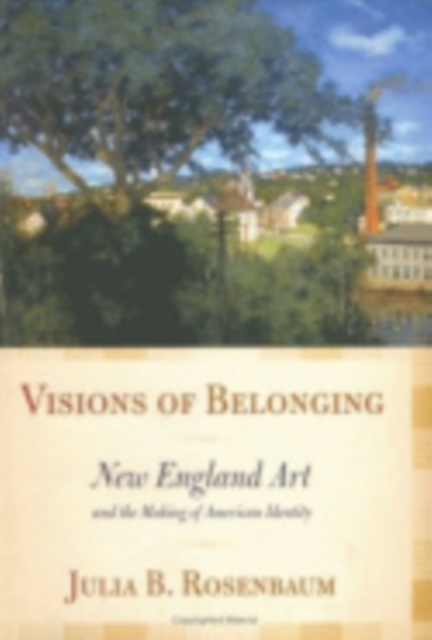
Visions of Belonging : New England Art and the Making of American Identity Hardback
by Julia B. Rosenbaum
Hardback
Description
In the late nineteenth and early twentieth centuries depictions of New England flooded the American art scene.
Childe Hassam, Willard Metcalf, Theodore Robinson, and Julian Weir, and other well-known artists produced images of quaint villages, agricultural labor, scenic rural churches, and the distinctive New England landscape.
Julia B. Rosenbaum asks why and how a range of artists—including Impressionist and Modernist painters and sculptors—and exhibitors fashioned this particular vision of New England in their work.
Against the backdrop of industrialization, immigration, and persistent post-Civil War sectionalism, many Americans yearned for national unity and identity.
As Rosenbaum finds, New England emerged as symbolic of cultural and spiritual achievement and democratic values that served as an example for the nation.
By addressing the struggles for national unity, the book offers a new interpretation of turn-of-the-century American art.
Ultimately, Visions of Belonging demonstrates how the local became so important to the national; how art was crucial to the formation of national identity; and how internal nation building takes place within the realm of culture, as well as politics. And even as later artists, such as Georgia O'Keeffe, challenged New England's cultural hegemony, the appeal of linking regional identity to national ideals continued in distinctive ways. Beautifully illustrated with color plates and almost sixty halftones, Visions of Belonging explores the interplay between art objects and the shaping of loyalties and identities in a formative phase of American culture.
It will appeal not only to art historians but also to anyone with an interest in nineteenth-century studies, the Gilded Age and Progressive Era, American studies, New England history and culture, and American cultural and intellectual history.
Information
-
Available to Order - This title is available to order, with delivery expected within 2 weeks
- Format:Hardback
- Pages:216 pages
- Publisher:Cornell University Press
- Publication Date:09/11/2006
- Category:
- ISBN:9780801444708
Information
-
Available to Order - This title is available to order, with delivery expected within 2 weeks
- Format:Hardback
- Pages:216 pages
- Publisher:Cornell University Press
- Publication Date:09/11/2006
- Category:
- ISBN:9780801444708






